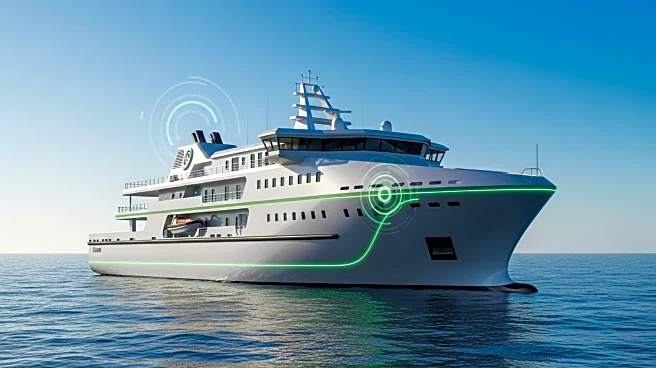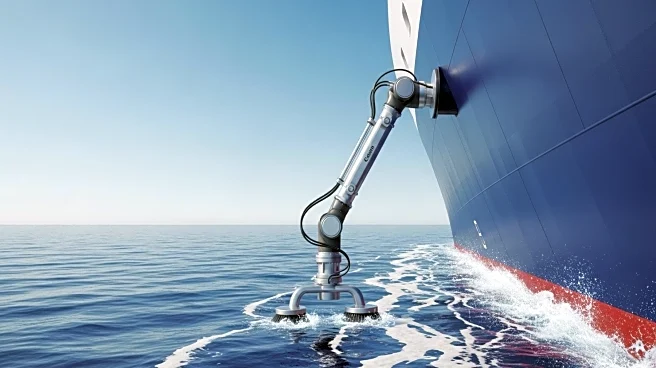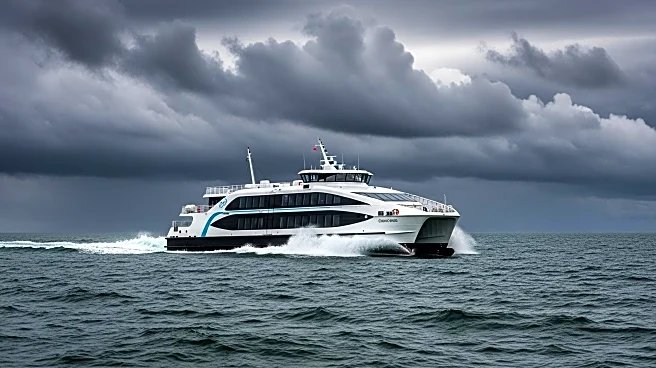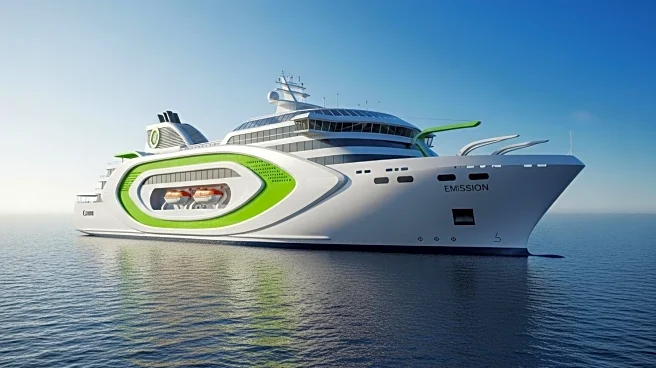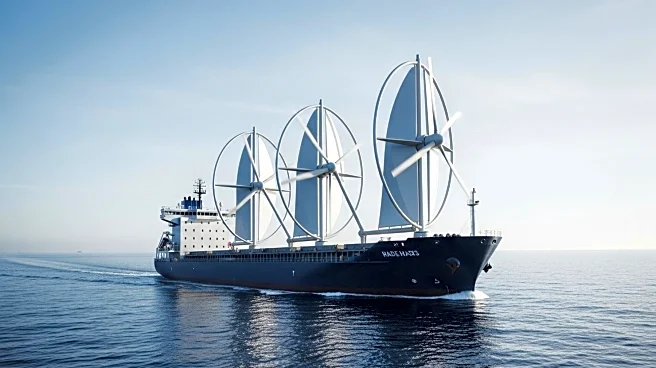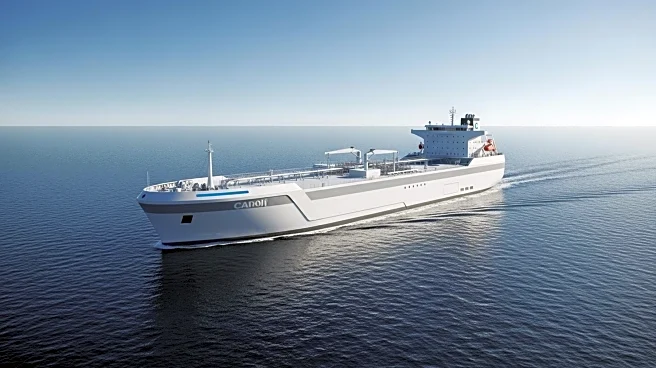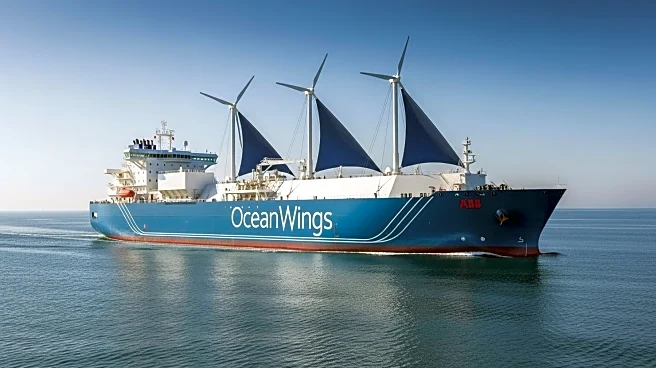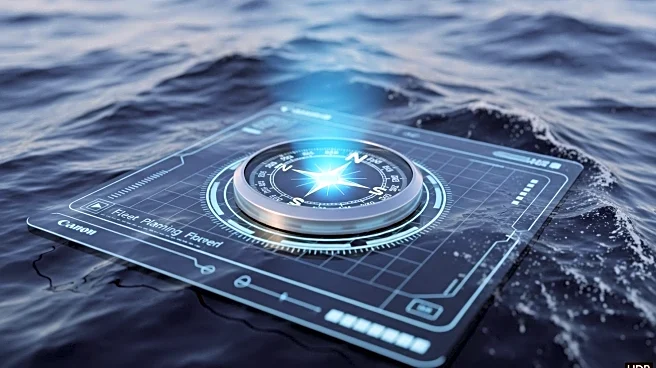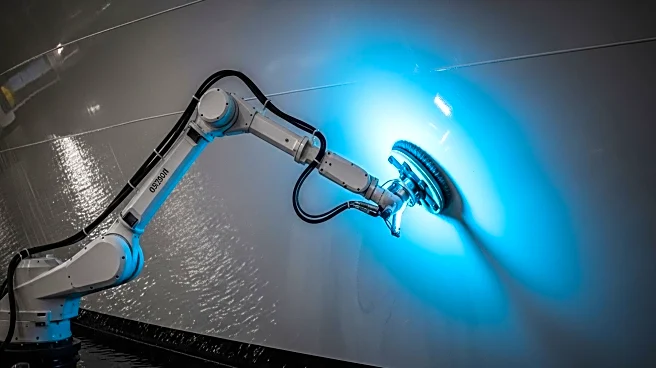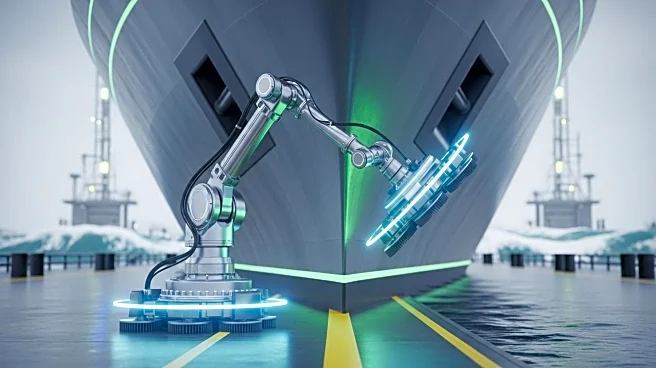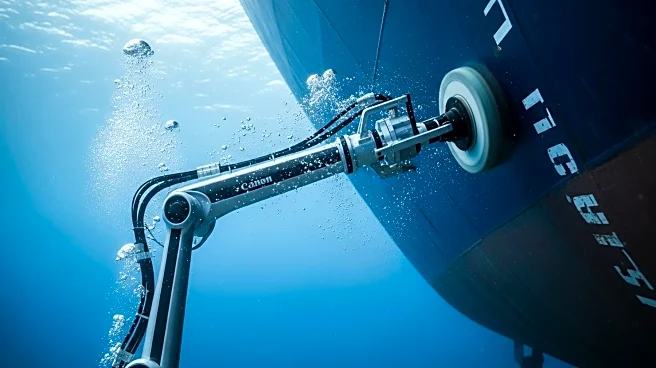What is the story about?
What's Happening?
A.P. Moller - Maersk has launched a significant retrofit program for its time-chartered fleet, involving around 200 vessels. The initiative aims to improve fuel efficiency and cargo-carrying capacity, thereby reducing costs and greenhouse gas emissions. The program includes structural and technical enhancements such as elevating the wheelhouse, raising lashing bridges, and upgrading lashing systems and loading computer functionalities. Additionally, propellers and bulbous bows are being replaced to optimize hydrodynamic efficiency. The project, which spans various vessel sizes and configurations, is set to be completed by 2027, with investment costs shared between Maersk and vessel owners.
Why It's Important?
This retrofit program is crucial for Maersk's goal of achieving a 35% reduction in scope 1 greenhouse gas emissions by 2030. By enhancing fuel efficiency and cargo capacity, Maersk aims to lower operational costs and environmental impact, aligning with global sustainability targets. The initiative also strengthens Maersk's competitive position in the shipping industry, as improved vessel performance can lead to increased profitability and market share. Stakeholders, including shipowners and environmental groups, stand to benefit from reduced emissions and improved operational efficiency.
What's Next?
Maersk and its partners are executing over 1,500 individual projects across the fleet, with an additional 1,000 projects underway. As the program progresses, Maersk will continue collaborating with shipowners to implement these changes, potentially influencing industry standards for vessel retrofitting. The success of this initiative may encourage other shipping companies to adopt similar strategies, further advancing the industry's shift towards sustainability.
AI Generated Content
Do you find this article useful?
